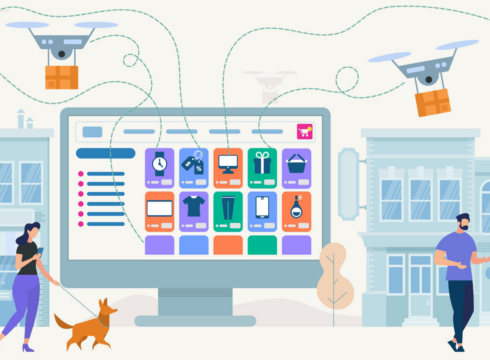Currently standing at $70 Bn (FY22), India’s ecommerce market is touted to jump to $215 Bn by FY 27 and further to $6.6 Tn by 2030, growing at a CAGR of 8.5%
The combination of affordability and the luxury of purchasing from bed or bathroom has created an environment in which brands can grow and thrive
Going forward, D2C brands need to touch the heart of consumers, innovate through the head and deliver hands-on. Customers must be acquired with care, rather than relying solely on algorithms
Inc42 Daily Brief
Stay Ahead With Daily News & Analysis on India’s Tech & Startup Economy
India’s ecommerce market is on the cusp of a revolution as the netizens get ready to not only window-shop but consume the premium. Currently standing at $70 Bn (FY22), it is touted to jump to $215 Bn by FY 27 and further to $6.6 Tn by 2030, growing at a CAGR of 8.5%. Market buoyancy is motivated by the strong micro and macro fundamentals as India prepares for the bronze medal after the US and China by 2027.
The worst is behind us. As the pandemic raged across the globe in 2020-22, restraining the global economy, it fueled an increase in ecommerce and hastened the acceptance of digital transformation.
The future looks bright, as market experts predict that India will have 1.5 Bn smartphone users by 2021 and that the online shopper base, which is currently third in the world with 180-190 Mn shoppers, will overtake the US in the next one to two years.
The Fuel Of Growth?
Consumer spending is expected to reach $4 Tn by 2030, growing at a 10% CAGR. The cash cows are large middle-class urban households, which constituted 62% in 2021 and will increase to 78% by 2030. Millennials and Gen Xers prefer to shop online rather than in a physical store.
The combination of affordability and the luxury of purchasing from bed or bathroom has created an environment in which brands can grow and thrive. With the rise of consumerism and online marketplaces, opportunities for the young workforce in IT, packaging, and delivery have increased. This ecstatic state has become the ideal breeding ground for the growth of D2C brands.
Many people wonder if D2C is superior to or an alternative to other traditional ecommerce platforms. The answer is none can replace the other. Traditional online platforms work in a similar manner as offline stores.
For both of the aforementioned markets, a supply chain mechanism is in place. There are suppliers of raw materials/consumables, manufacturers, branding, warehousing, distributors, wholesalers, retailers, and finally, the customer purchases the finished goods.
Product manufacturing and selling necessitate capital outlay and risk engagement at the manufacturing level, as well as goods movement and a rutted environment for small players. On the other hand, the host of enablers in D2C with low entry barriers creates fertile ground for startups.
D2C eliminates intermediaries in the supply chain because one owns the raw materials, manufacturing unit, and handles product sales, resulting in higher profits. The remaining business ventures, such as product design, website/app development, brand marketing, logistics management, and customer support, are widely and easily accessible.
Pie Is Large, Gourmets Are Eating And Drinking The Most
The evolution of D2C brands in India is causing rapid growth. Several brands have clearly reached their north star of INR 100 Cr revenue and are continuing to climb. Apparel and footwear are the most popular online shopping categories, followed by grocery and gourmet. However, D2C in India is expected to reach $60 Bn by FY27, with grocery and gourmet accounting for the lion’s share (38%) of all categories.
The industry is experimenting with niche unblemished products mainly dairy. The urban population’s experimentation with online shopping, unmet need for quality products, and willingness to pay have given rise to a slew of direct-to-consumer dairy brands. Today’s netizens understand the distinction between pouched dairy milk (giffen milk) and premium quality dairy. These emerging high-quality premium D2C dairy companies have a dedicated customer base.
Furthermore, the government has aided dairy farming infrastructure through initiatives such as the National Dairy Plan, a framework for sustainable development in the sector, as well as empowerment programmes such as the Jan Dhan Yojana and the Startup India initiative.
Sore Thumbs?
However, D2C in India is being challenged by incumbent brands fighting back in the offline market. Organic products, especially premium quality dairy is costly for lower-income group households. They have to deal with multiple partners for logistics, marketing and ecommerce platforms.
Another struggle is product differentiation, especially in dairy and dairy products, all claiming to be tech-based premium dairy. But it is irrefutable that D2C players have carved a niche for themselves with their unique business models, empowering consumers through an array of choices.
Going forward, D2C brands need to touch the heart of consumers, innovate through the head and deliver hands-on. Customers must be acquired with care, rather than relying solely on algorithms.
Note: We at Inc42 take our ethics very seriously. More information about it can be found here.


